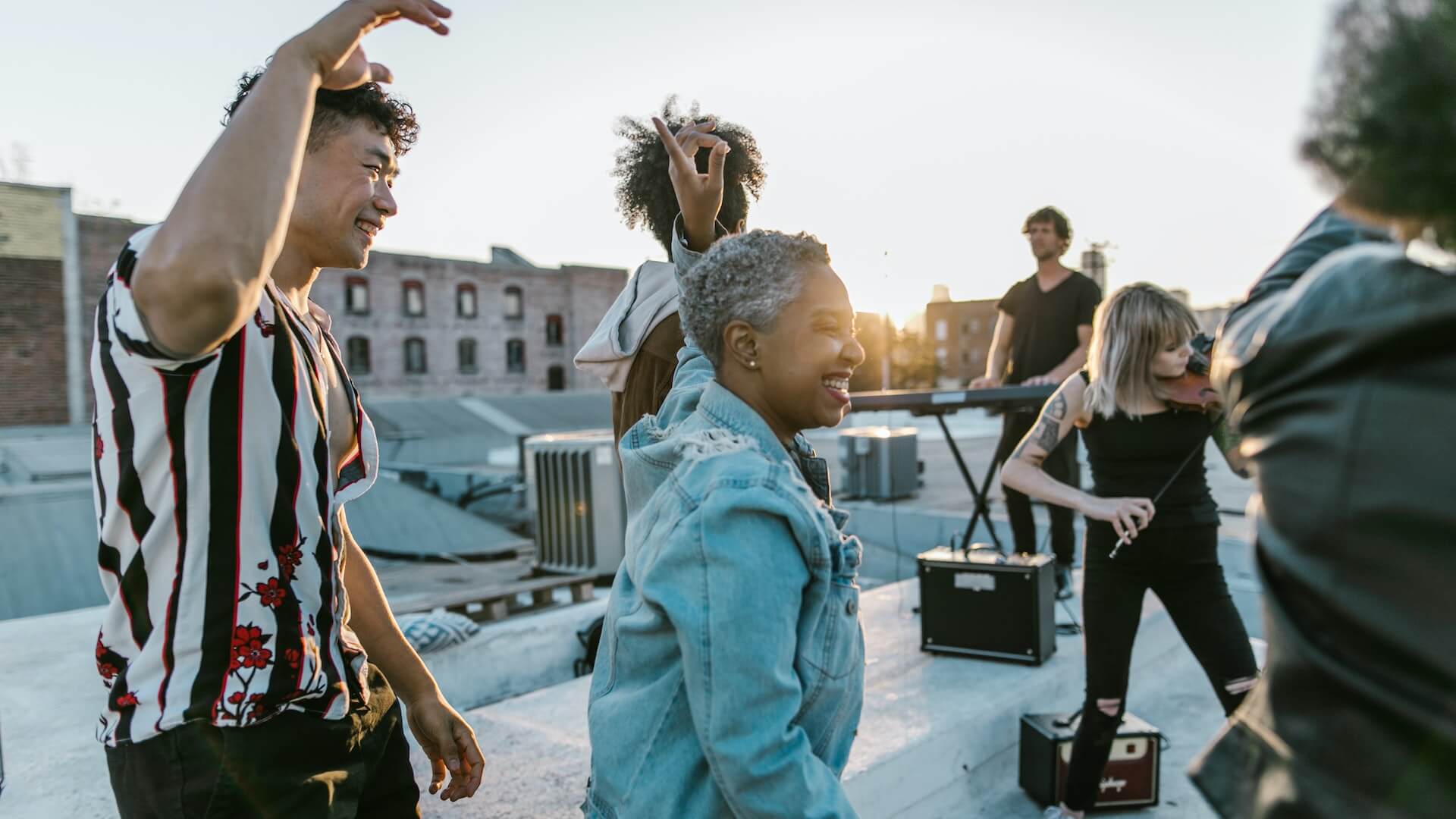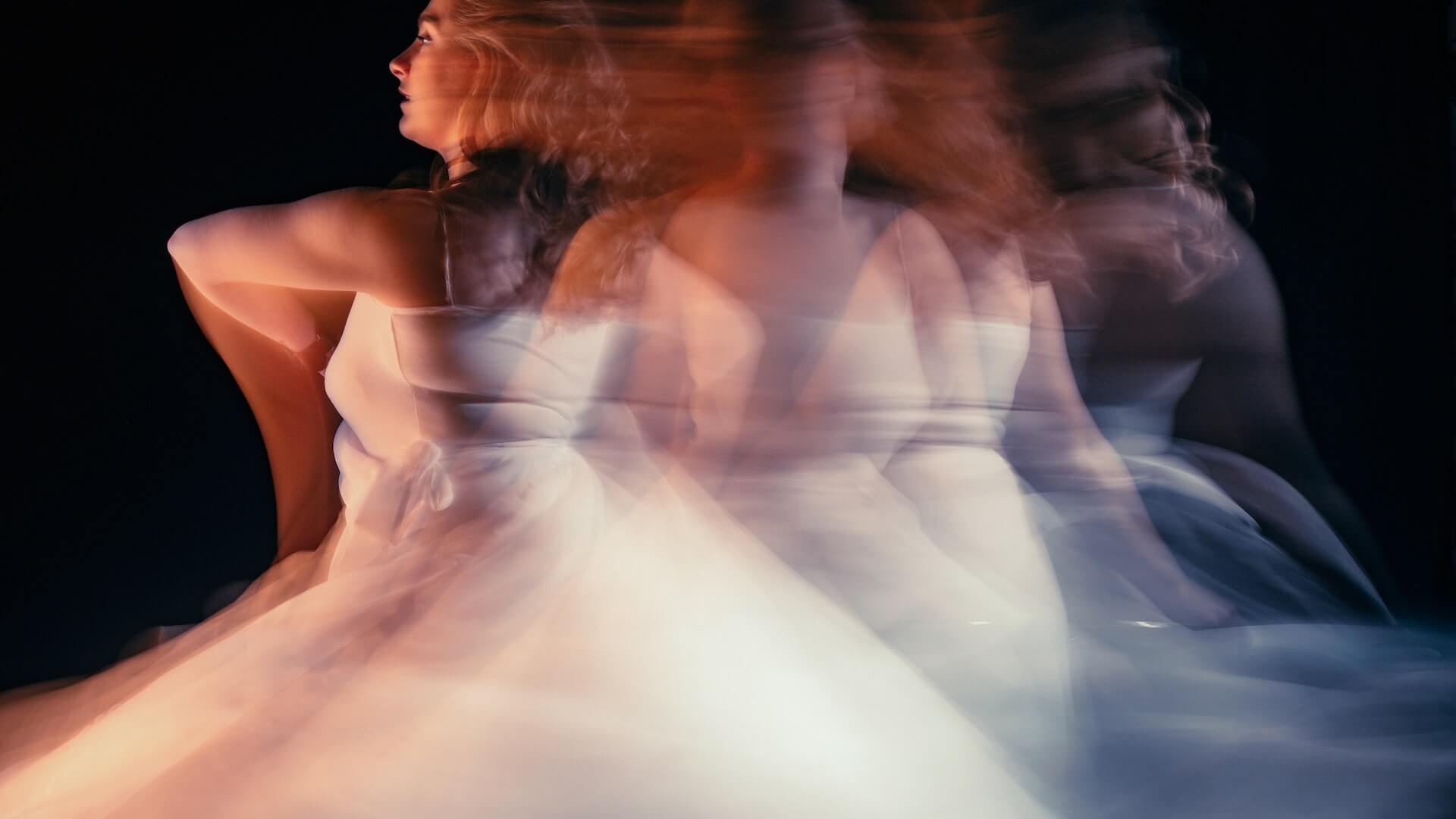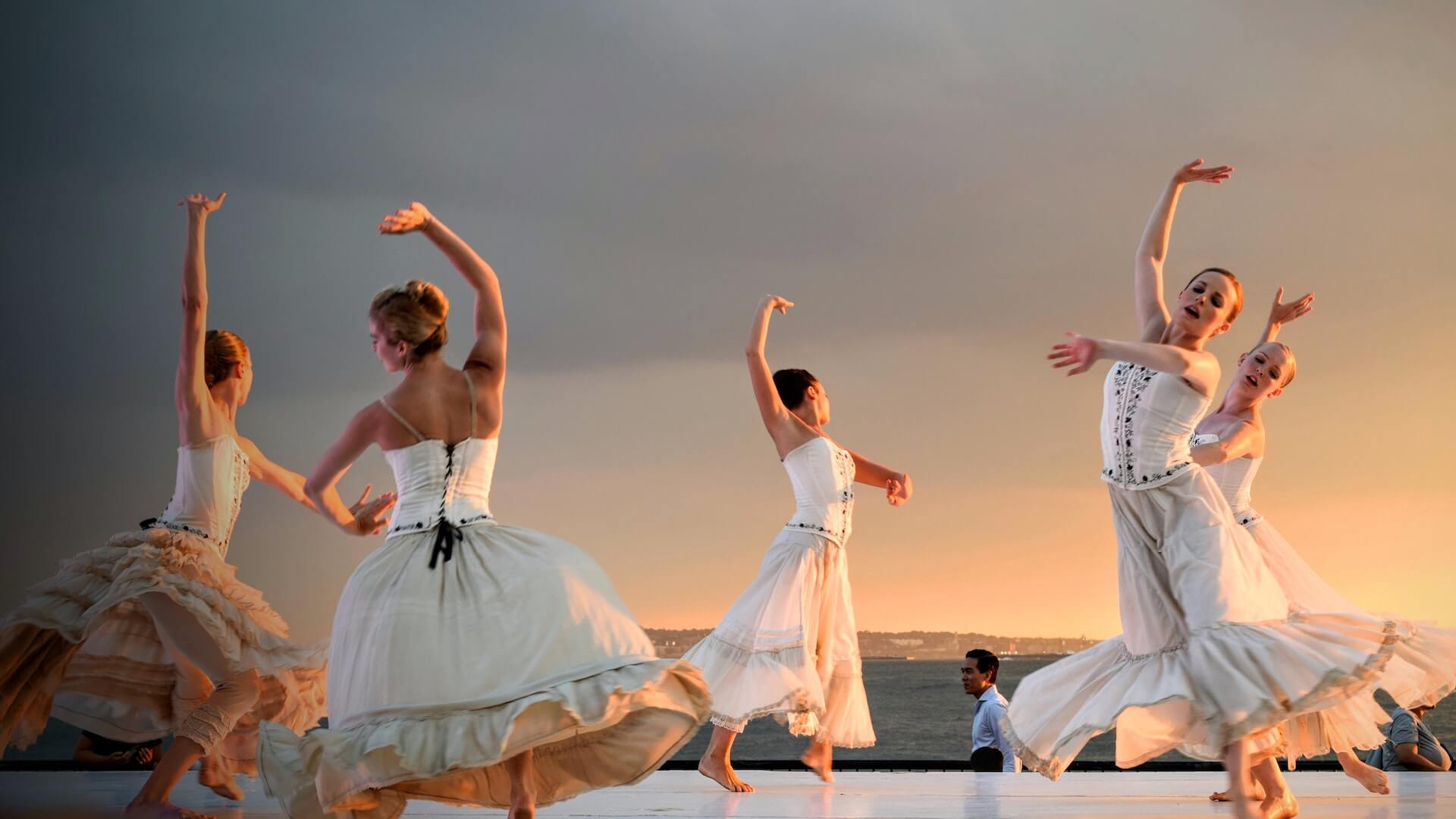Dance has been a part of human culture for thousands of years, and for good reason. It is a powerful tool for self-expression, communication, and connection with others. But beyond its social benefits, dance has a transformative effect on the mind and body. Studies have shown that regular dancing can improve balance and coordination, increase flexibility and strength, reduce stress and anxiety, and even boost cognitive abilities. In this blog post, we will explore the power of dance and how it can transform your mind and body. We’ll look at the science behind dance, the different types of dance and their benefits, and how to get started with dancing, even if you’ve never danced before. Get ready to put on your dancing shoes and discover the transformative power of movement!
Introduction: Exploring the transformative power of dance
Dance has been a form of expression and communication for centuries, transcending cultural boundaries and captivating audiences worldwide. Beyond its aesthetic appeal, dance possesses a transformative power that goes far beyond the physical movements. It has the ability to touch the depths of our souls, igniting emotions, and evoking a sense of freedom and liberation like no other art form can.

In this blog post, we will embark on a journey to explore the profound impact that dance has on the mind and body. From ancient rituals to contemporary forms, dance has played a significant role in human culture, connecting individuals and communities through its universal language.
Through the art of dance, individuals are able to express their deepest emotions, unleash their creativity, and connect with their inner selves. Whether it’s through the graceful movements of ballet, the vibrant rhythms of hip-hop, or the rhythmic beats of traditional folk dances, dance has the power to transport us to a place where words are no longer necessary.
Not only does dance provide a means of self-expression, but it also offers numerous physical and mental health benefits. The rhythmic movements and coordination required in dance promote flexibility, strength, and cardiovascular fitness. As we sway to the music and synchronize our bodies, endorphins are released, uplifting our mood and reducing stress levels.
Furthermore, dance has been used as a therapeutic tool, aiding in the healing process for individuals with physical, emotional, and cognitive challenges. It provides an outlet for individuals to release tension, gain confidence, and enhance their overall well-being.
The science behind the mind-body connection
The mind-body connection is a fascinating area of study that explores the intricate relationship between our thoughts, emotions, and physical well-being. Numerous scientific studies have delved into the power of this connection, shedding light on how movement, specifically through dance, can profoundly impact both our minds and bodies.
When we engage in dance, our brains release endorphins, which are natural chemicals that promote feelings of happiness and pleasure. These endorphins not only uplift our mood but also help to reduce stress and anxiety. As we move to the rhythm of the music, our bodies release tension, allowing us to experience a sense of release and relaxation.
Moreover, dance has been found to increase the production of neurotransmitters like serotonin and dopamine, which are associated with feelings of joy, motivation, and reward. These brain chemicals play a crucial role in regulating our emotions and can contribute to a sense of overall well-being.
Beyond the mental benefits, dance also brings about significant physical transformations. It is a highly dynamic and expressive form of movement that engages various muscle groups, improves flexibility, and enhances cardiovascular fitness. Regular dance practice can lead to increased strength, improved coordination, and better posture.
Additionally, dance has been shown to have a positive impact on brain health. It challenges our cognitive abilities by requiring us to remember steps, follow rhythms, and coordinate movements. This cognitive stimulation can help enhance memory, attention, and overall brain function, reducing the risk of cognitive decline as we age.
Dance as a form of expression and communication
Dance, with its rhythmic movements and expressive gestures, has the power to transcend words and language barriers. It is a universal form of expression and communication that has been a part of human culture for centuries. Whether it’s the graceful ballet movements, the energetic hip-hop routines, or the passionate flamenco steps, dance allows individuals to convey emotions, tell stories, and connect with others on a deeply emotional level.

Through dance, individuals can express their innermost thoughts and feelings that may be difficult to articulate through words alone. It provides a creative outlet for self-expression, enabling individuals to communicate their joys, sorrows, desires, and fears in a way that is both personal and universal. Dance allows emotions to flow freely, releasing tension and promoting a sense of catharsis.
Moreover, dance is not only a form of self-expression but also a means of communication between individuals. In traditional cultural dances, intricate movements and patterns serve as a shared language that tells stories, preserves traditions, and strengthens community bonds. It is a way for people to connect, celebrate, and commemorate important events and milestones.
Beyond its expressive and communicative qualities, dance also has numerous physical and mental benefits. It promotes physical fitness, flexibility, and coordination, improving strength and endurance. The repetitive movements and rhythmical patterns of dance stimulate the brain, enhancing cognitive function, memory, and focus. Dance has also been proven to reduce stress, anxiety, and depression, promoting overall mental well-being.
The physical benefits of dance on the body
The physical benefits of dance are numerous and go far beyond just improving coordination and flexibility.
One of the most evident physical benefits of dance is improved cardiovascular health. Dancing requires constant movement, which elevates the heart rate and increases blood flow throughout the body. This aerobic activity helps strengthen the heart and lungs, improving overall cardiovascular endurance.
In addition to cardiovascular health, dance also enhances muscular strength and tone. Different styles of dance engage various muscle groups, leading to improved muscle definition and increased strength. From the graceful movements of ballet that sculpt long and lean muscles, to the powerful and explosive movements of hip-hop that build strength and power, dance offers a diverse range of physical challenges.
Furthermore, dance is a weight-bearing activity, which means it helps promote healthy bones and prevents conditions like osteoporosis. The impact of dance on the bones stimulates the production of new bone cells, making them stronger and less prone to fractures.
Not only does dance offer physical benefits, but it also acts as a natural stress reliever. Engaging in dance releases endorphins, the body’s feel-good hormones, which can alleviate anxiety and improve overall mood. The rhythmic movements and focused concentration required in dance also promote mindfulness and a sense of presence, allowing dancers to escape from the pressures of daily life.
How dance improves mental health and emotional well-being?
Dance has long been recognized for its ability to uplift the spirit and bring joy to people’s lives. However, its benefits extend far beyond just physical fitness. Engaging in dance can have a profound impact on mental health and emotional well-being.

One of the key ways dance improves mental health is by reducing stress and anxiety. When we dance, our bodies release endorphins, which are natural mood-boosting chemicals. This can help alleviate feelings of tension and promote a sense of relaxation and calmness. Additionally, the rhythmic and repetitive movements in dance can have a meditative effect, allowing individuals to quiet their minds and find inner peace.
Dance also serves as a powerful form of self-expression. Through movement, individuals can release emotions that may be difficult to express through words alone. Whether it’s the exuberance of a joyous dance or the catharsis of a deeply emotional piece, dance allows individuals to connect with their emotions and gain a sense of release and liberation.
Furthermore, dance provides a sense of belonging and connection. Engaging in group dance activities fosters social interaction, builds relationships, and creates a sense of community. This social support network can be vital for maintaining good mental health and combating feelings of loneliness or isolation.
In addition to these psychological benefits, dance also promotes cognitive function. Learning dance routines requires concentration, memory, and coordination, which can help improve cognitive skills and enhance brain health. This is particularly beneficial for older adults, as dance has been shown to reduce the risk of cognitive decline and improve overall cognitive abilities.
Dance as a tool for stress relief and relaxation
In today’s fast-paced and demanding world, stress has become an all-too-common companion. Finding effective ways to unwind and relax is vital for our overall well-being. One such powerful tool that often gets overlooked is dance. Beyond being a form of artistic expression, dance has the remarkable ability to alleviate stress and promote relaxation.
When we engage in dance, our bodies release endorphins, often referred to as the “feel-good” hormones. These endorphins elevate our mood, reduce anxiety, and create a sense of happiness and euphoria. As we move to the rhythm, our minds shift focus away from daily worries and troubles, allowing us to enter a state of mindfulness and pure enjoyment.
Furthermore, dance serves as a cathartic outlet for emotional release. Through movement, we can express and process our emotions in a non-verbal manner. It allows us to let go of pent-up tension, frustration, and negative energy, leading to a sense of release and liberation. In this way, dance becomes a form of therapy, providing a safe space where we can reconnect with ourselves and let go of the burdens that weigh us down.
Moreover, dance encourages deep breathing and mindful body awareness. As we synchronize our movements with the music, we become more attuned to our bodies, their sensations, and the present moment. This heightened sense of body awareness promotes relaxation, as we let go of tension and allow ourselves to flow with the music and the rhythm.
Whether it’s a structured dance class, freestyle movement in the comfort of your own home, or even joining a social dance group, incorporating dance into your routine can be a transformative experience. Not only does it provide a fun and engaging way to stay active, but it also offers an avenue for stress relief, relaxation, and emotional well-being.
Enhancing cognitive abilities through dance
Research has shown that engaging in dance can have numerous cognitive benefits. For instance, it has been found to improve memory and attention span. The complex choreography and sequences involved in dance require dancers to remember steps and movements, which exercises and strengthens memory pathways in the brain. Additionally, the focus and concentration required during dance practice and performances can enhance attention span and the ability to stay present in the moment.

Furthermore, dance has been linked to improved problem-solving skills. The improvisational aspect of certain dance styles encourages dancers to think on their feet and make quick decisions. This mental agility translates into real-life situations, where dancers are able to approach challenges with a flexible and creative mindset.
Moreover, dance is a powerful tool for emotional expression and regulation. It allows individuals to channel their emotions through movement, providing an outlet for stress, anxiety, and other negative emotions. By engaging both the mind and body, dance promotes emotional well-being and can even reduce symptoms of depression and anxiety.
In addition to these cognitive benefits, dance has also been associated with increased self-confidence and self-esteem. Mastering dance techniques and performing in front of others can boost one’s self-assurance and body image. This newfound confidence can extend beyond the dance floor and positively impact various aspects of life.
Dance as a means of self-discovery and personal growth
Dance has a remarkable ability to serve as a powerful tool for self-discovery and personal growth. When we move our bodies in rhythm with music, something magical happens. It is as if each step, each sway, and each leap becomes a gateway to unlocking hidden aspects of ourselves.
Through dance, we are able to express emotions that may be difficult to put into words. It provides a safe space where we can let go of inhibitions and release pent-up feelings. Whether it’s the graceful movements of ballet, the expressive gestures of contemporary dance, or the energetic beats of hip-hop, dance allows us to connect with our innermost selves and explore the depths of our emotions.
Engaging in dance can also be a transformative experience physically. It challenges our bodies, pushing us to develop strength, flexibility, and coordination. As we learn new dance techniques and routines, we become more aware of our bodies and their capabilities. We gain a better understanding of our own physical limits and how to push beyond them, fostering a sense of personal achievement and growth.
Moreover, dance fosters a strong sense of discipline and commitment. To master a dance routine requires dedication, perseverance, and practice. It teaches us the value of hard work and the rewards that come from investing time and effort into something we are passionate about. As we progress in our dance journey, we develop resilience and learn to embrace challenges as opportunities for growth.
Dance also has the power to connect us with others and build meaningful relationships. Whether it’s through group dance classes, performances, or dance communities, we find ourselves surrounded by like-minded individuals who share our love for movement. This sense of belonging and camaraderie not only enriches our dance experiences but also contributes to our personal growth by fostering social connections and support networks.
Different dance styles and their unique benefits
What makes dance even more captivating is the wide array of dance styles, each with its own unique benefits. Let’s explore some of these styles and how they can transform both mind and body.

1. Ballet:
Known for its elegance and grace, ballet is an excellent dance style for improving posture, flexibility, and strength. The precise movements and focus on technique help to sculpt long, lean muscles and enhance body awareness. Ballet also promotes discipline, perseverance, and mental clarity.
2. Hip Hop:
A high-energy dance style characterized by its urban flair and infectious beats, hip hop is not only a great form of cardio but also a fantastic way to improve coordination, rhythm, and agility. It encourages self-expression, boosts confidence, and fosters a sense of community among dancers.
3. Contemporary:
Combining elements of ballet, jazz, and modern dance, contemporary dance is known for its fluidity and emotional storytelling. This style encourages dancers to explore their creativity, express their emotions, and connect with their inner selves. It also enhances flexibility, strength, and body awareness.
4. Latin Dance:
From salsa to cha-cha-cha, Latin dance styles are not only incredibly fun but also offer a wide range of physical benefits. These dances involve quick footwork, hip movements, and partner connections, improving cardiovascular health, coordination, and balance. Latin dance also boosts confidence and promotes a sense of joy and passion.
5. Ballroom Dance:
With its graceful movements and elegant partnerships, ballroom dance is a fantastic way to improve posture, balance, and coordination. It enhances social skills, communication, and teamwork, as dancers must work together harmoniously. Ballroom dance also provides a great opportunity for couples to bond and strengthen their relationship.
6. Tap Dance:
Known for its rhythmic footwork and percussive sounds, tap dance is not only a great form of cardio but also an excellent way to improve coordination, musicality, and timing. The intricate footwork and syncopated rhythms promote mental agility and concentration. Tap dance also offers a sense of joy and self-expression.
How to incorporate dance into your life and experience its transformative effects
Incorporating dance into your life can be a powerful way to experience its transformative effects on both the mind and body. Whether you are a beginner or have some prior dance experience, there are various ways you can embrace the power of dance and make it a part of your daily routine.
1. Take Dance Classes:
Joining a dance class is a fantastic way to learn new dance styles, improve your skills, and meet like-minded individuals who share your passion for movement. From classical ballet to hip-hop, salsa to contemporary, there is a wide range of dance styles to choose from. Look for local dance studios or community centers that offer classes suitable for your level and interests.
2. Dance at Home:
You don’t need a fancy dance studio or professional training to enjoy the benefits of dance. Clear a space in your living room, put on some energizing music, and let your body move freely. Dancing at home allows you to express yourself without any judgments or limitations. You can follow online dance tutorials or simply let your intuition guide your movements.
3. Attend Dance Events:
Keep an eye out for dance performances, festivals, or workshops happening in your area. Attending these events not only exposes you to different dance styles and techniques but also allows you to immerse yourself in the vibrant energy of the dance community. Watching skilled dancers perform can also inspire and motivate you to continue exploring dance as a transformative practice.
4. Dance for Fitness:
Dance is an excellent form of exercise that combines cardiovascular activity with artistic expression. Many fitness studios offer dance-inspired workouts like Zumba, cardio dance, or dance fitness classes. Engaging in these classes not only helps you burn calories and improve your fitness levels but also boosts your mood and overall well-being.
5. Incorporate Dance into Daily Activities:
Embrace the joy of dance in your everyday life. Turn up the music while doing household chores and let yourself groove to the rhythm. Use dance as a way to de-stress and release tension after a long day. Dance can be a form of self-care and a way to connect with your body on a deeper level.
Conclusion
Dance has been a form of expression and celebration for centuries, and its benefits go beyond just physical fitness. By engaging in dance, we tap into a world of creativity, self-expression, and emotional release. Not only does dance improve coordination, flexibility, and strength, but it also boosts mood, reduces stress, and enhances cognitive function. We encourage you to embrace the power of dance and incorporate it into your life for a truly transformative experience. So put on your dancing shoes and let the rhythm guide you towards a happier, healthier you!



